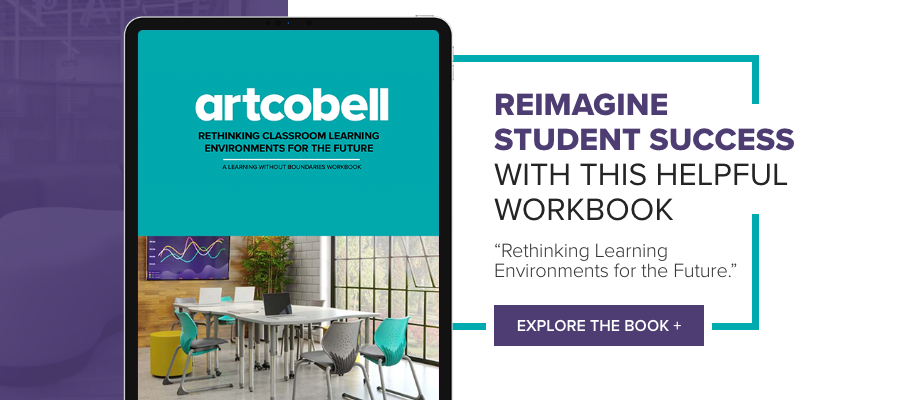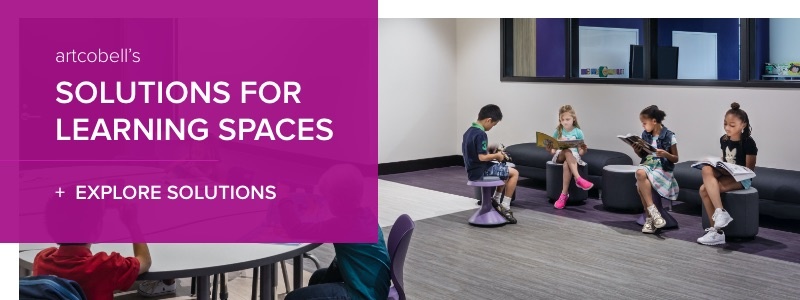It’s no secret that every student learns a little differently. Teachers and educators have known this for years, but it’s only recently that schools have started taking a proactive approach to curating learning environments that meet the diverse needs of all of their students.
What's a Living Classroom?
Enter the living classroom – a concept based on the idea that learning styles change over time and that learning environments should be flexible enough to fit a diversity of learning strategies and students. Simply put, the living classroom is the model educators can use to convert their 20th-century learning spaces to facilitate new and proven learning environment techniques.
In this blog, we'll take a closer look at the concept of the living classroom and provide you with classroom setup ideas that use diverse classroom furniture to promote different types of student learning.
Encourage Different Learning Styles Using Diverse Classroom Furniture
The living classroom is a concept born from the dynamic nature of learning. Technology, culture and student learning styles continuously evolve and develop every day. The living classroom theory is based on the idea that a classroom has multiple functions and the activities in the space keep changing based on the style of instruction and the participants. Transforming the classroom from the 19th century mechanical or industrial age to the 21st-century, organic living classroom age is an essential part of reinventing today’s learning strategies.
The living classroom acknowledges that each student learns a little differently and provides room for all types of learning. A single desk or table is the right size for the individual study, partner projects, or for one-on-one tutoring sessions. When the team or project grows, desks and tables come together.
See the image below for examples of using diverse classroom furniture to create your own living classroom.
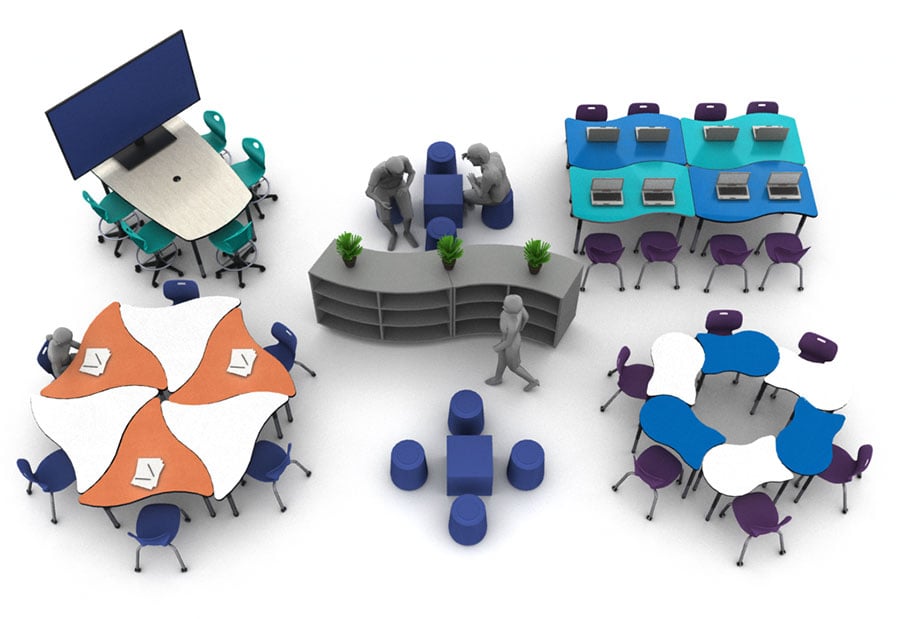 Related Article: Student-Centered Learning Environments that Inspire Learning
Related Article: Student-Centered Learning Environments that Inspire Learning
Must-Know Tips to Creating a Living Classroom
A lot goes into your classroom setup. Keep these must-know tips in mind as you purchase the right classroom furniture for your students' diverse learning needs.
- Classrooms are born from the dynamic nature of learning
- Multiple functions based on style and participants are essential
- Every student requires the flexibility to learn differently
Use Learning Zones to Transform Your Learning Spaces
There are many elements to consider as you plan a transition to an active learning (or collaborative learning) space. Reviewing critical pieces like educational standards, curriculum, instructional activities, and testing is standard no matter what classroom you are using. However, it's also important to consider your classroom space.
Ask yourself questions like:
- How are desks arranged?
- Where are the bulletin boards?
- How are materials organized around the classroom?
You can bring these seemingly disconnected components together in a system of six learning zones to create an optimal learning environment that fosters success for each student's learning needs.
The instruct, learn, collaborate, gather, reflect and share zones will help establish routines, save time, and maintain organization from the first through the last days of school.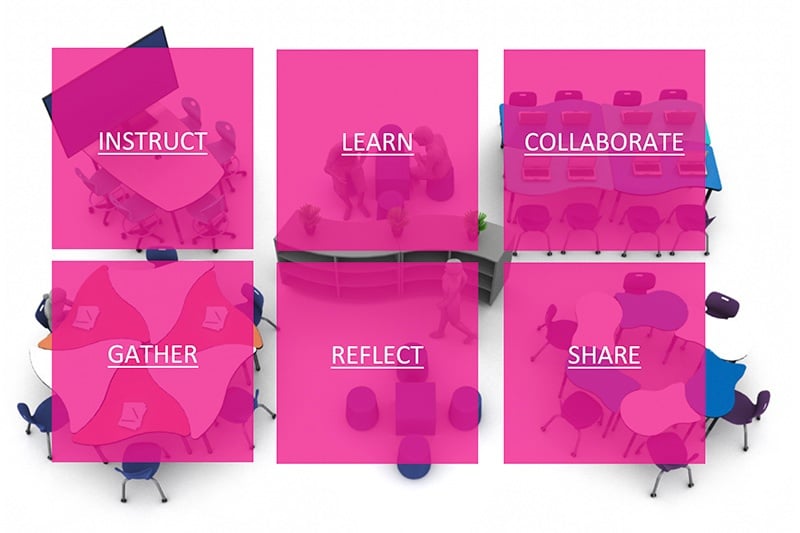
Classroom Layout Ideas to Inspire Student Learning
Need some more inspiration when it comes to creating a living classroom? Check out our classroom design suggestions. This page addresses each of the living classroom learning zones to explore design strategies that facilitate better learning for your students. You can bookmark this page and check back regularly for ideas and shared stories on how classroom furniture and classroom design can change the dynamics of student learning.
A Closer Look at Living Classroom Learning Zones
Now that you know what a living classroom is and how it benefits students, let's take a closer look at how the six learning zones work.
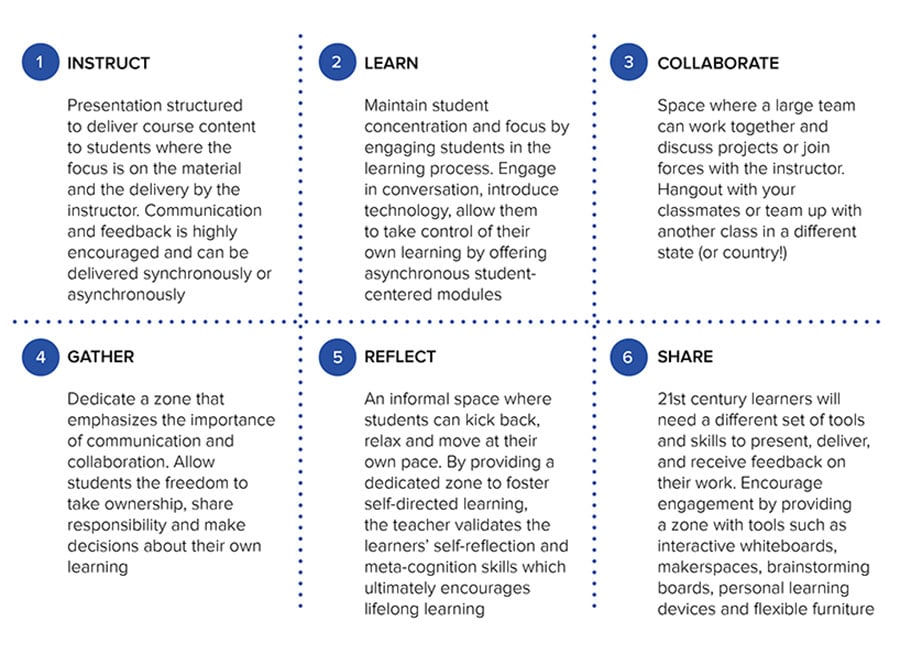
Learning Zone 1: Instruct
The instruction zone serves as a little oasis away from home, but it also helps you manage your professional responsibilities. This zone serves as a private space to host one-on-one conferences with your students.
Learning Zone 2: Learn
The learning zone houses the worksheets, resources, games, and tech tools for the subjects you teach. It's crucial to display how subjects interconnect because too many students have a difficult time relating subject matter to other disciplines. Tools and resources should be moved from closets, storage bins, or cabinets and placed in this zone. Provide anchor charts with key ideas and strategies, flashcards, study notes, key people in the field, timelines, and a variety of print materials. Upgrade your word wall by adding visuals and real objects. Organize vocabulary alphabetically or by concept or story -- the key is to provide context for each term. Define the zone with a header and comfortable seating.
Learning Zone 3: Collaborate
A collaborative zone serves multiple purposes. It reminds students that everyone is working toward common goals. It provides time to discuss what was learned, make connections, pose questions, present other perspectives, and engage in reflection. These discussions are an opportunity for you to evaluate progress, clarify information, address misconceptions, and plan ahead. At the start of the year, you will lead the discussions, then transition toward having students open, facilitate, and close their meetings. It is helpful to define the zone and include the meeting time in your schedule. You can use an area rug to anchor the space and give several students a place to sit. Other students can remain standing or bring in their chairs.
Learning Zone 4: Gather
The gather zone houses all of those items that spark imagination and bring a classroom to life. These include arts and crafts materials, recorders, cameras, music makers, games, puzzles, and fun books and magazines. Share samples of different projects so that students have a jumping off point. You can harness this creativity by giving the students a central concept to explore. Have them draw what they see, list observations, and write down their questions.
Learning Zone 5: Reflect
Sharing the classroom space with 20 or more kids isn't always easy. Some students naturally prefer to work alone, while others only need a quiet zone to catch up on work, study, read, write, take a test, or reflect. Some lounge seating or a spare table and chairs in the corner of your room can be used to define the zone. If possible, provide some earphones to help filter out classroom noise. If needed, use study carrels to block visual distractions.
Learning Zone 6: Share
Every classroom needs a sharing zone and, like the collaborative zone, it serves multiple purposes. It helps students connect the dots from one lesson to the next and gives them a space to share what they heard, experienced, or learned that might differ from one student to the next. These discussions are an opportunity for you to evaluate progress, clarify information, address misconceptions, and plan ahead. In the same fashion as the collaborative zone, the idea is to start out leading students in their discussions before letting them facilitate and share on their own. That’s why it's helpful to define the zone and include the meeting time in your schedule.
Use Flexible Classroom Furniture to Create a Living Classroom
Living classrooms offer a flexible alternative to traditional classroom setups and enable teachers to educate and engage students in new ways. Despite all the benefits, it can be a daunting task imagining the best approach to convert your traditional, lecture-based space into a more collaborative classroom environment. That’s where the experts at Artcobell are most helpful – we can link you in with one of our local partners in your area to walk you through the process, or you can explore more resources we’ve made available for you.
Ready to take the next step? Use this helpful guide to convert your learning space into a modern living classroom!
